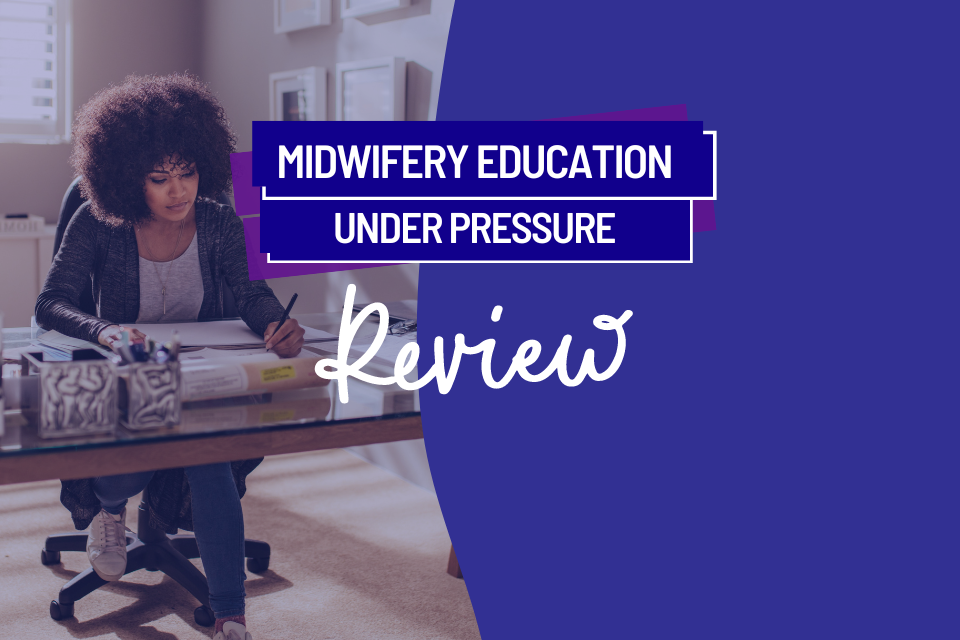In this article Neil Stewart, Editorial director for the Maternity and Midwifery Forum, reviews content from the Midwifery Education under Pressure conference. He points to the gaps and calls for an increased focus on the needs of midwifery education.
_______________________________________________________________________________________________________________________
Midwifery Education Under Pressure – The Review
It is a point worth remembering that the Chief Midwifery Officer in the year 2060 is probably a student midwife somewhere in a school of midwifery today.
As the press headlines focus on midwifery staff shortages in trusts you would assume that at least midwifery education would be getting the focussed attention needed to produce enough educated midwife recruits for the future.
It would seem the obvious case for a laser focus for management attention. But it seems not, as a leadership conference on midwifery education heard on 3rd November.
Quite a lot in midwifery education still falls between two stools. Between two systems that may be drifting apart and in need of some urgent attention; the Universities and their partner NHS trusts.
Midwifery education is firmly rooted in 50/50 time in class, time in maternity units. One part of the midwifery education deliver is under universities salaries and systems, the other in trusts.
In universities midwifery schools often sit within wider schools of nursing and midwifery but, just as often, midwifery and nursing sit in an even wider faculty of health and social care. There were expressions of concern that midwifery’s voice was not heard at the right level for such a key profession.
Government solutions to staff shortage include recruiting midwives back into the profession; persuading them not to retire as early or recruiting overseas are all welcome but neglect work with students and their support structures.
The core policy always has to be ensuring the reliable supply of student midwives completing their courses and go on into practice.
The focus is increasingly on recruitment and retention. The government facilitated this in midwifery education by taking the cap off student recruitment numbers a few years ago in the universities, but to complete their training midwives need placements and placements are determined by the NHS trusts.
Nicky Clark, LME at Hull University set the scene and how we arrived at this point mapping the challenges and the gaps.
A decade of change with service changes paralleled by demands to teach new higher standards and new approaches and the lessons from Better births in England, and other reviews in the other countries.
The salary systems in universities and NHS trusts have drifted apart, opening up a starting gap of around £5000 but growing towards £10,000 if you take into account the unsocial hours and other NHS payments.
Career pathways needing improvement to retain the best teaching staff, returning to practice is leaving experience gaps in teaching.
Expansion of student intakes is restricted by the capacity for finding matching placements in the overstretched NHS maternity units.
Lack of guaranteed employment of newly qualified midwives is losing many to the profession.
Students are often being supervised by inexperienced midwives within trusts.
But there are stories of achievement highlighted by the way midwifery education responded to teaching online during COVID and the huge and difficult role students played as courses were adapted to meet the emergency.
The new Future midwife education standards set out by the NMC were covered by Dr Jacqui Williams and their importance linked to avoiding the damaging reports of maternity errors and lack of compassion set out in the recent Ockenden and Kirkup reports.
Prof Jayne Marshall from Leicester pointed to management work arounds with secondments and associates’ roles to keep the flow of good staff moving and the importance of having good working relations which your university HR for whom midwifery staffing may be marginal.
Dr Alison Callwood from Surrey revealed fascinating research on how online recruitment could provide fairness if done in an evidence-based way and simplify the process for lecturers.
Shelia Brown from Bangor took the conference through how she engages her students along the whole course, giving an insight into how Bangor came top of the National Student Survey for student experience with lessons for everyone.
Prof Jane Sandall CBE, from Kings College London and the Head of Midwifery and Maternity Research NHS England, painted a more optimistic picture of the growth of research specific to midwifery and maternity but with the caveat that one study suggests that it takes 17 years for research to get into practice and that everyone should work to improve that. She also called for the application of the Follet principles in salaries and standing where academic clinician’s salaries are matched across universities and NHS for doctors as a key to building continuous research into careers. She included a strong call for cross disciplinary work, reflecting her own position at Kings College which reaches into the humanities.
Professor Mary Renfrew OBE, Professor Emerita University of Dundee, looked at where next for midwifery education reflecting on the achievements and lessons of COVID, reiterating how the new standards had to be the way to tackle failures and avoid a breach of trust with women in the future. But she also called for more work to close the theory/practice gap which can disillusion early career midwives.
The conference finished with a closing discussion including Vikki Smith from Northumbria University and Yana Richens OBE, Director of Midwifery Liverpool Women’s Trust.
There was a great deal more management, educational and research insight and strategic thinking on show across the day and a general view that, while the problems and gaps were causing serious problems, that the new grouping of Professors of Midwifery, working with the Council of Deans had solutions to hand if they could get the laser focussed attention for just a short time on the needs of midwifery education.
Neil Stewart
Editorial Director, Maternity and Midwifery Forum
November 2022


